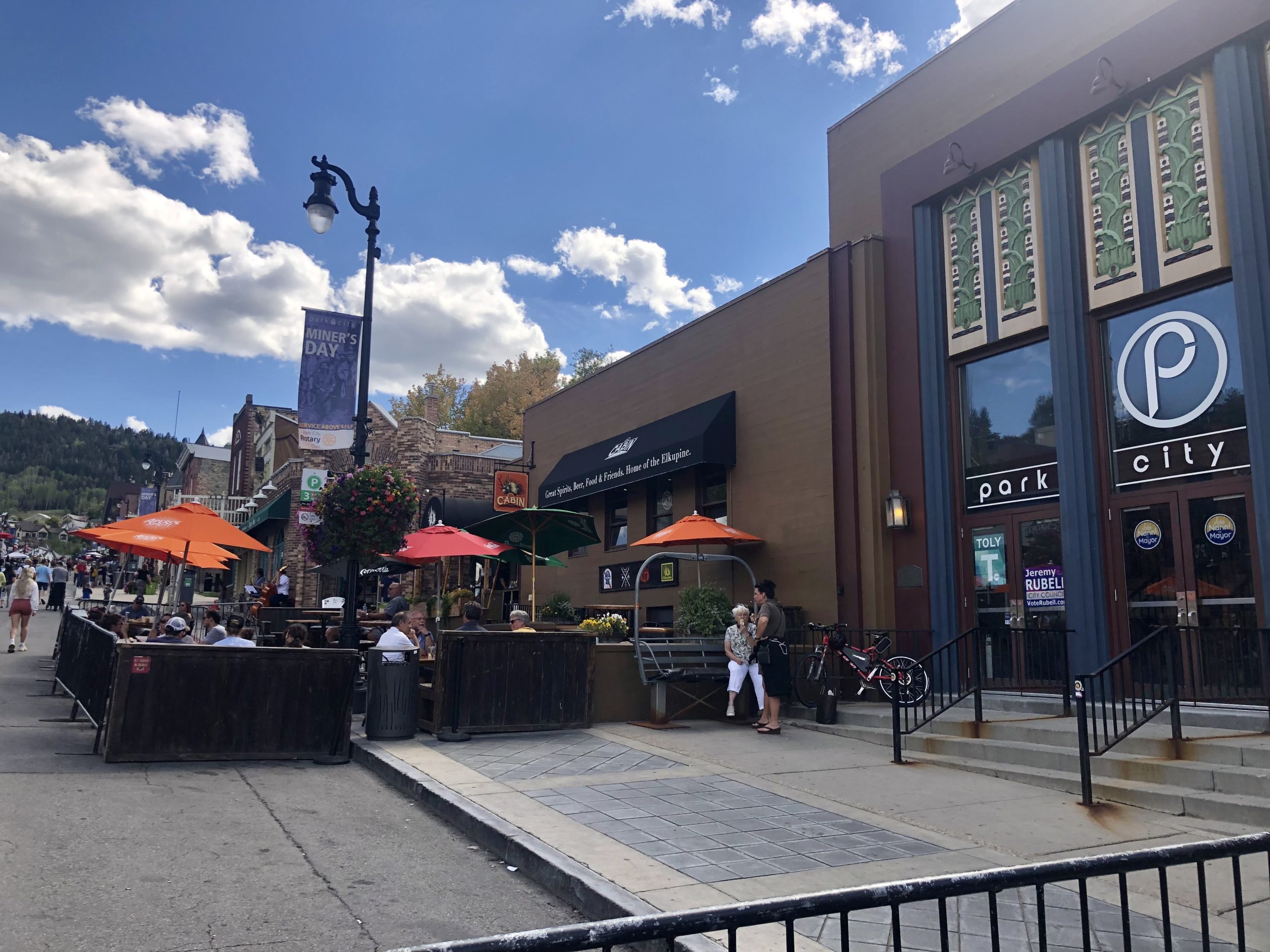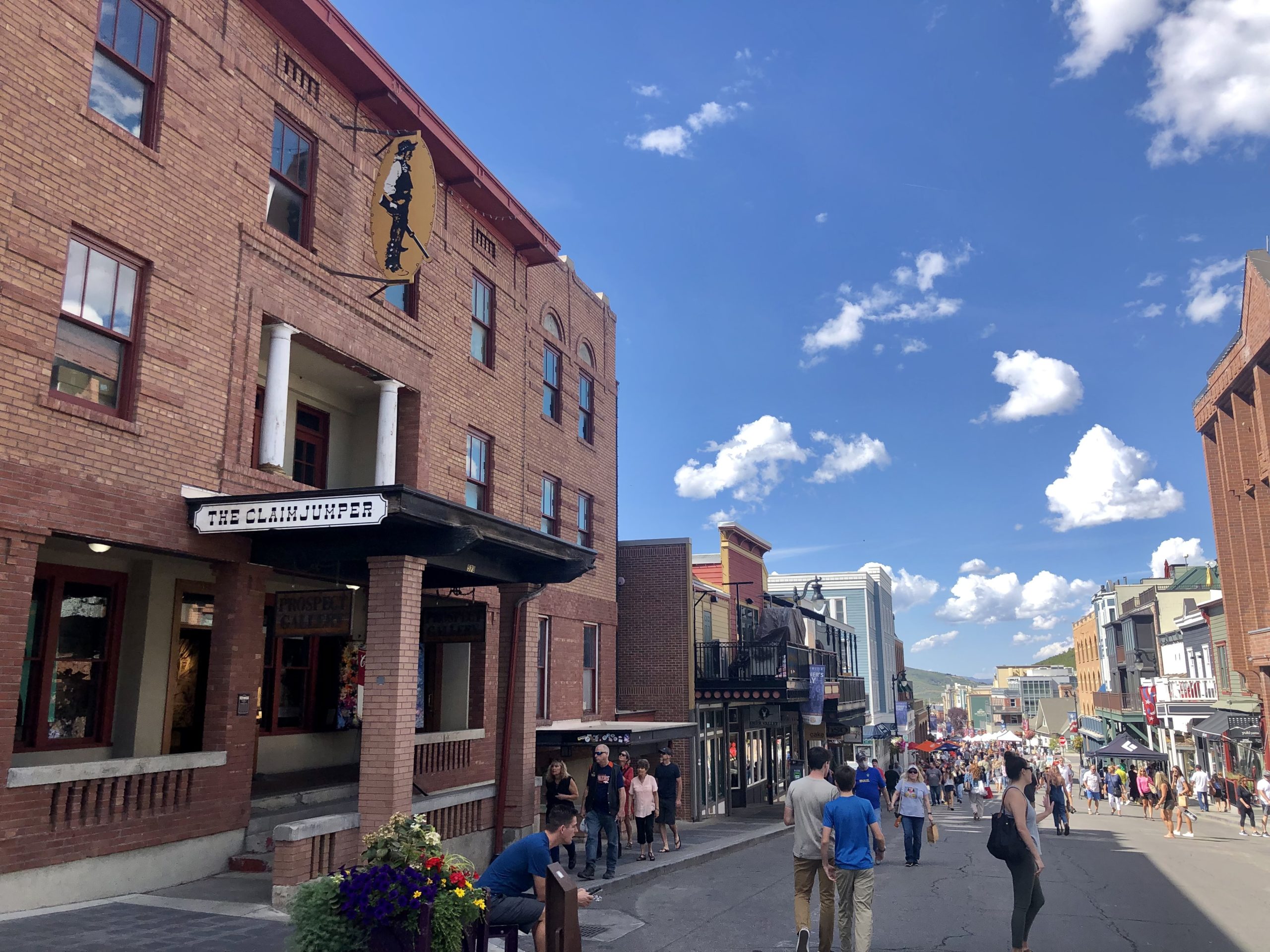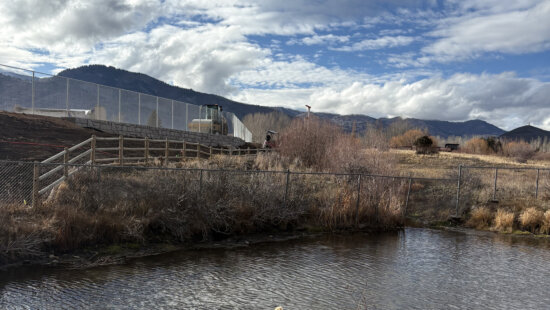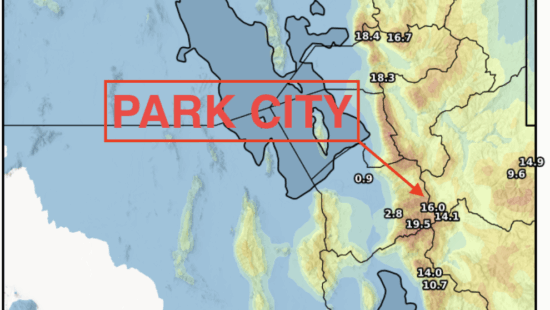News
9/11 through Olympic lenses
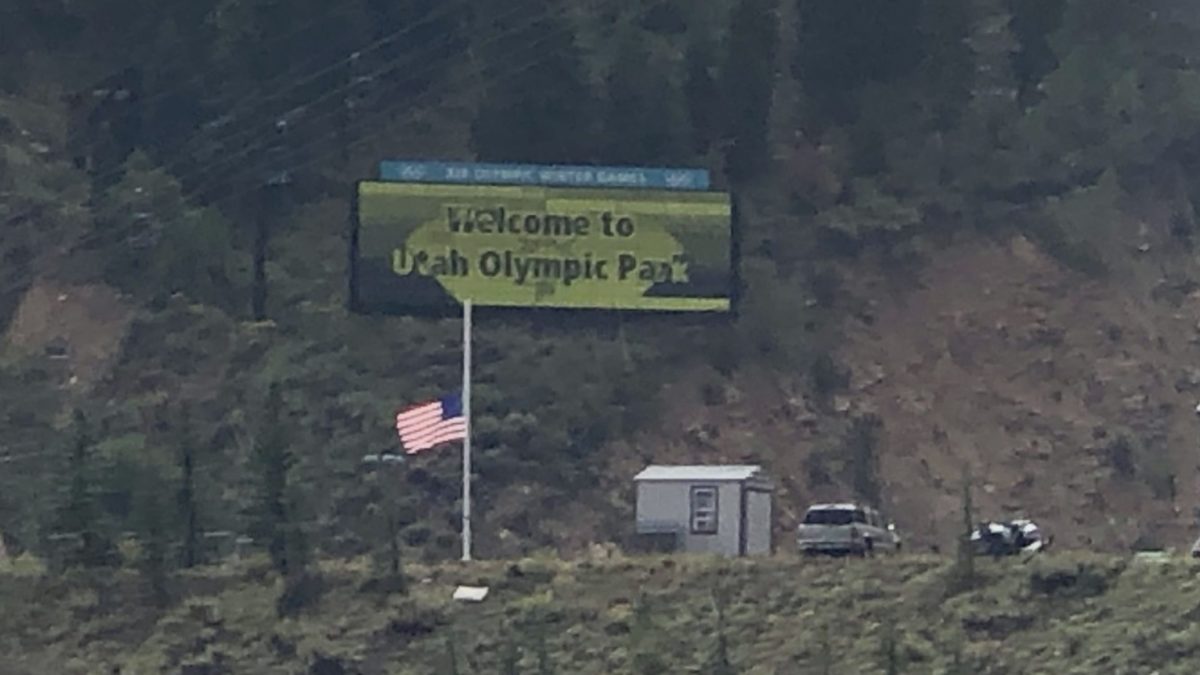
Flag at half-mast today, 9/11/21, at the Utah Olympic Park. Photo: Michele Roepke
PARK CITY, Utah. —The Salt Lake 2002 Olympic Games took place a mere five months after 9/11 but needless to say, they nearly didn’t take place at all. Once the deep discussions decided that moving forward with the Games could be a global unifying factor, proceedings commenced. The iconic Stars and Stripes Flag found at Ground Zero had an integral part of the Opening Ceremony which helped set the tone for the healing nature of the international event.

Tristan Gale who won a gold medal for Team USA in Skeleton days later said to me last night, “Seeing that flag in the Stadium was one of the most incredible moments of my life.” She volunteered at Ground Zero after the 2002 Salt Lake Olympics to, “help the effort of recovering remains and talk to first responders.” Since then, Gale met Jon Geisler while they were both working at the Utah Olympic Park. The two fell in love, got married, and are raising their young children in Japan where Geisler is stationed having followed his dreams of defending the USA joining the United States Marines and is now a commander after Gale followed her dreams of representing the USA all the way to the top of the Salt Lake 2002 Olympic podium.
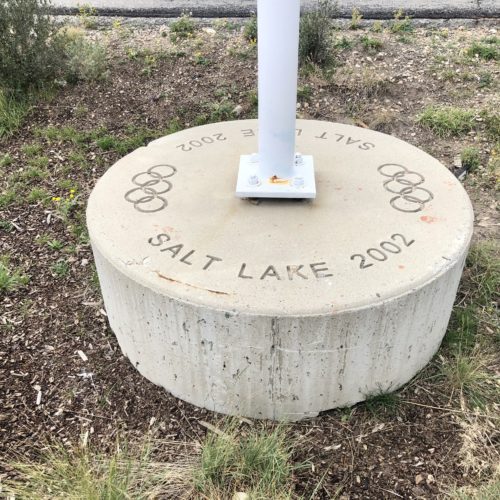
“It was the most cohesive group of people I’ve ever worked with,” said Connie Nelson to me last night, 20 years after 9/11. Nelson, the Executive Director for the Utah Olympic Park’s (UOP) Alf Engen Museum was, on 9/11, the Business Manager of the UOP for the Salt Lake Olympic Committee (SLOC), “Everyone was working towards the same goal of hosting a safe Games. No matter what country, what sport, what role, public or private sector.” Nelson described how she worked closely with, as she affectionately refers to them and as they referred to themselves the LEOs, the law enforcement officers. Among newly-created tactics, trip wires were placed all around the hilltops of the UOP. Nelson informed them of the high amount of moose and deer in the forest. Sure enough, the animals continually tripped the closely maintained wires making an already challenging duty that much more so.
In those hills, “Snipers were camouflaged as snow.” She also recalls that the temporary spectator parking lot in the fields at the base of the Olympic Park Rd. became a venue in and of itself needing to have its own security detail. In the walk up to the UOP was the first Olympic magnetometers, commonly called metal detector gates and bag check or “Mag-n-Bag” present at the entrances of all the Salt Lake 2002 Venues, that wasn’t even on the radar prior to 9/11.
Nelson said, “Plain-clothed agents were omnipresent.” Tom Ridge, the Secretary of the newly-formed United States Homeland Security Department stood atop the biggest Nordic Ski Jump perusing the UOP’s stunning structures and commented on how breathtakingly impressive the athletic endeavors are around Park City. “It was such a unique time we were all so happy just to be together no matter what country, it was truly a friendly rivalry of peace through sport.”
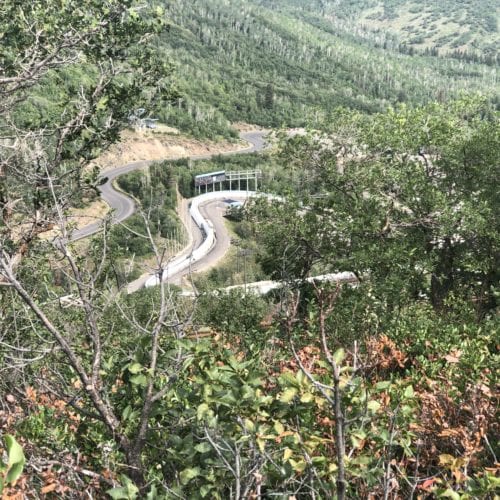
Indeed all the Utah mountains surrounding 2002 venues including Deer Valley Resort and Park City Mountain were different after 9/11. It became banned to allow foreign national ski patrol employees to shoot the Howitzer-style cannons that launch ammunition in an efficient and effective practice releasing snow-covered hills creating desired, predictable, controlled spaces, man-made avalanches.
The Homeland Security Department knew precisely when and where potential bad actors would target bad acts therefore protecting those spots made the mission of safety somewhat straightforward. They covered the Ceremonies knowing precisely where and what time they occurred. Same concept with precisely when and where each gathering of spectators was for each sport at each venue.
Maureen Dunn and her sister Eileen own and operate Park City’s widely-used Done To Your Taste catering company based out of Kamas. 20 years ago when 9/11created a paradigm shift to the Games, Eileen was so new that recently arrived at the state Eileen hadn’t even had an opportunity to procure living arrangements, thus slept in their office on Main St. in Park City in the Claimjumper building, now an art gallery, during the Olympics. She provided food during the Salt Lake 2002 Olympic Games for the nightly, nationally-known concerts the likes of Cheryl Crow as well as multiple Sprint Co. private parties on Main St. in what is now Park City Live and what was then Harry-O’s. She started the Budah Bar where her late husband was the bartender, which is now The Cabin in the middle of Main St. Dunn said to me last night, “Seeing the athletes walking in the daily afternoon parade with the Clydesdale horse-drawn carriage down Main St. bookended by security personnel gave me chills because all the people from all the countries around the world were getting along after 9/11.”
Outgoing Park City Mayor, Brad Olch, held a dinner party for members of the International Olympic Committee (IOC) at his home hiring the sisters to cater it. Done To Your Taste was born of that night.
She was instrumental in the logistics of the suddenly-added thousand security officers as a result of 9/11. After years of planning where every spectator, athlete, coach, bus driver, and member of the media would lay their heads each of the 17 nights, the community now needed to house, feed, and provide transportation and services for the new large group of national security forces that weren’t coming until 9/11.
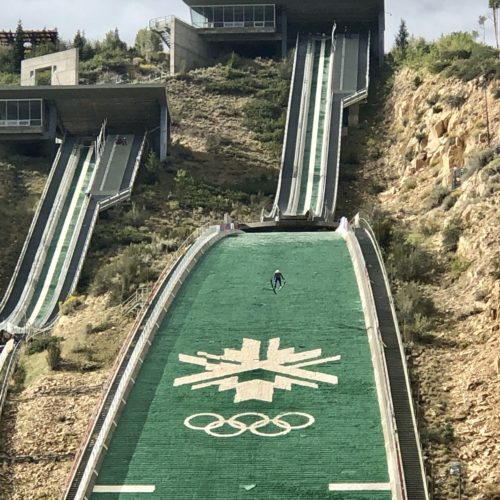
Bob Bills is entering his 42 season teaching skiing at Snowbird on the days he’s not working for the Heber City School District. On 9/11 he was working for SLOC as the USA Youth Athlete Development Director. Whenever a country gets awarded the bid to host the Olympics, a flood of funding comes in to ensure the minimum of one spot the nation gets in every sport is well-represented. Youth athletes may never have bobsledded before or snowboarded halfpipes before or done curling before and now got to under the tutelage of Bills’ programs. He, himself, as a nationally-ranked athlete from Orem High and the University of Utah had competed in freestyle aerials, skeleton, and nordic ski jumping at Alta and Brighton. Cottonwood Canyons couldn’t have any Olympic venues because the IOC requires every venue to have separate ingress and egress roads in case of emergency, ensuring tens of thousands of stakeholders are never stranded in any location like a box canyon due to a natural disaster like an avalanche or man-made disaster blocks the road. He remembers as he told me last night, 20 years later, while it wasn’t an issue, whatsoever prior to 9/11, during Games-Time, he was, “denied access to work with my own athletes without full credentials on everyone at every moment. When before I could quickly jump into any team truck to get around within venues, I now was stopped by well-meaning, understandable, and rightfully so security every step of the way.”
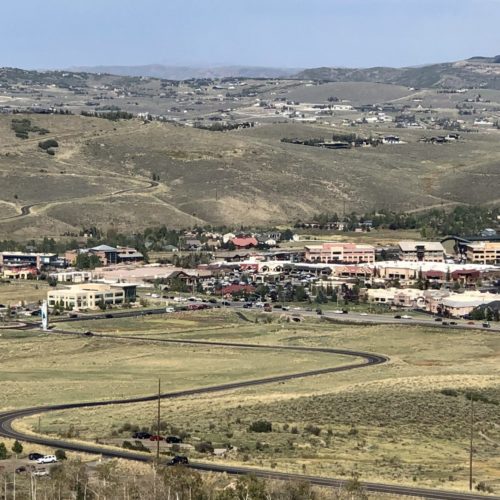
He recalls that when he returned to the Salt Lake International Airport the week of the start of the Saly Lake 2002 Olympics after a short trip away, that the travel industry had changed dramatically after 9/11 in regards to the plan of welcoming the world to Utah for the Olympics. His plane had to circle out over Tooele, a new normal due to security safety. Also, with the addition of the TSA, Bills and all the passengers had to stay buckled in their seats in the parked plane until their specific section of the aisle was released by flight attendants. “It was a whole new world,” he said.
Everybody interviewed expressed their sadness for the victims of 9/11, then and now.
